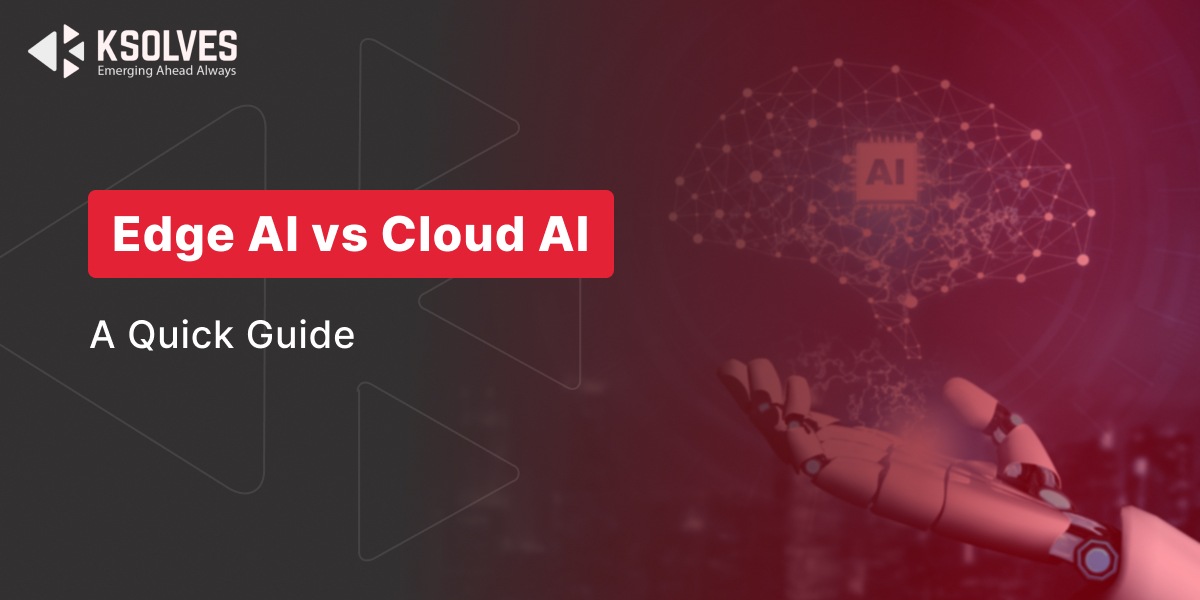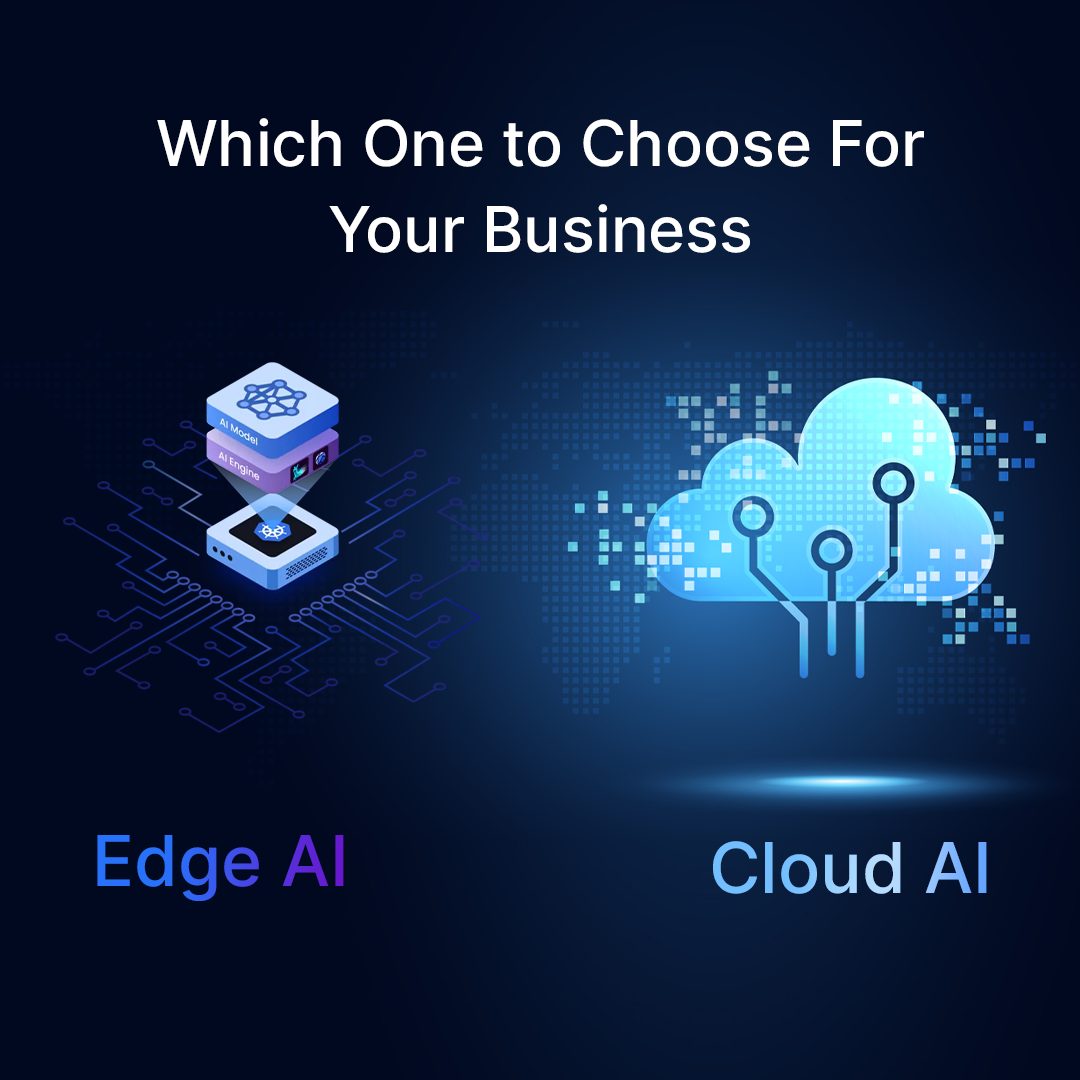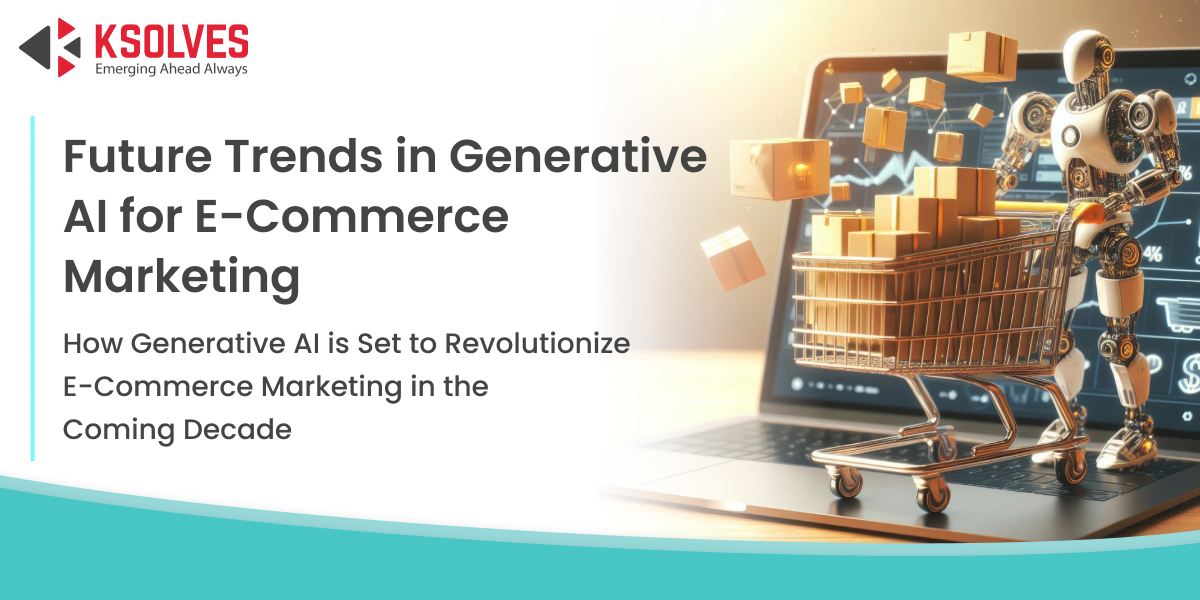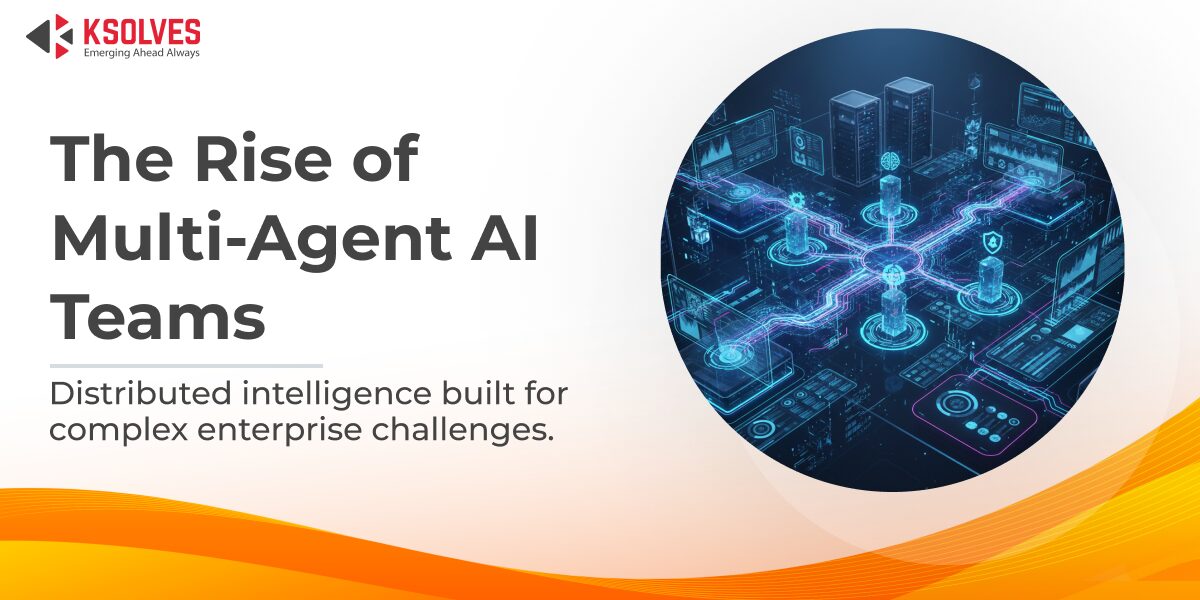Edge AI vs Cloud AI: Quick Insights for Your AI Strategy
AI
5 MIN READ
July 2, 2024

Step into the dynamic world of artificial intelligence, where two titans, Edge AI and Cloud AI, vie for supremacy. In this fast-paced realm of innovation and efficiency, businesses and developers face a crucial decision: should they harness the localized prowess of Edge AI or leverage the expansive capabilities of Cloud AI?
Both the titans hold their importance equally and distinct in their aspects. It becomes crucial to check what is fitting in your business socket. Before deciding to declare the winner of Edge AI v/s Cloud AI, it is essential to have a clear comparison and check who rules where. This will help you to understand what to use and when.
Here is a comparison between both technologies so that you can have a clear vision.
What is Edge AI?
Edge AI, also known as “AI at the edge,” integrates Artificial Intelligence into edge computing setups, processing data close to its source rather than relying solely on distant data centers. This proximity enables faster response times through on-device computation.
Gartner predicted five years ago that by 2025, 75% of enterprise data would be generated and processed outside traditional cloud environments, indicating the growing importance of Edge AI.
The rise of edge computing, fueled by the proliferation of IoT devices, led to the development of Edge AI, where AI algorithms run locally on dedicated hardware.
Key Edge AI considerations include optimizing hardware for local processing, developing tailored AI algorithms, ensuring secure data transmission and storage, and integrating edge devices into existing IT infrastructures.
What is Cloud AI?
Cloud AI utilizes centralized cloud servers for data processing and storage, enabling the execution of complex AI models and algorithms on a large scale. This technology leverages the extensive resources of cloud computing platforms and seamlessly integrates with services offered by cloud providers. Here are two fundamental aspects of how cloud AI operates:
1. Remote Processing and Storage of Data: Cloud AI systems manage vast quantities of data remotely, harnessing the computational power needed for intricate data processing tasks that surpass the capabilities of local devices.
2. Integration with Cloud Computing Platforms: Cloud AI is intricately connected with cloud computing platforms, which furnish robust and scalable environments supporting a diverse array of AI functionalities.
Also Read – Data Privacy Challenges and Best Practices in the Era of Generative AI
Understanding the Difference Between Edge AI and Cloud AI
The provided content outlines the advantages and disadvantages of both Edge AI and Cloud AI, highlighting their respective strengths and limitations. Let’s delve deeper into the comparison between these two approaches:
Edge AI vs Cloud AI Architecture
- Edge AI: Edge AI enables localized processing on edge devices, facilitating real-time decision-making without reliance on distant servers. It minimizes data transfer, reduces latency and bandwidth usage, and offers autonomy and privacy by keeping data localized. However, it faces resource constraints due to limited computing power on edge devices.
- Cloud AI: It centralizes data processing and AI model execution on remote cloud servers, offering scalability and flexibility with access to extensive resources. It relies on stable internet connectivity for data transmission, which can introduce latency issues. Cloud AI provides convenience and accessibility to advanced AI functionalities but may raise concerns regarding data privacy and dependency on network connectivity.
Latency and Real-Time Responses
- Edge AI: This offers reduced latency and improved real-time responses by processing data locally on edge devices. This immediate processing eliminates the need to send data to remote cloud servers, resulting in faster decision-making and response times.
- Cloud AI: Cloud servers are powerful, but sending data to and from them takes time. This delay can cause problems, especially for tasks that need quick responses. Real-time jobs might slow down because of these delays. Real-time applications may experience delays due to data transmission.
Privacy and Security
- Edge AI: Enhances privacy and security by keeping sensitive data localized on edge devices. This reduces the risk of data breaches during transmission to cloud servers.
- Cloud AI: Cloud platforms have good security, but sending sensitive data back and forth raises the chance of breaches. Still, cloud providers work hard to make security better and reduce these risks.
Computing Power and Storage
- Edge AI: Edge devices typically have limited computing power and storage capacity compared to cloud servers. This limitation may restrict the complexity of AI models that can be deployed on edge devices.
- Cloud AI: Cloud servers offer high processing power and vast storage capabilities, making them suitable for demanding AI tasks that require significant computational resources and access to extensive datasets.
Cost Considerations
- Edge AI: It can help in operational cost savings by reducing the need for continuous cloud computing resources and data transmission costs. However, there might be higher upfront hardware costs and maintenance needs associated with deploying and managing edge devices.
- Cloud AI: While cloud services offer scalability and flexibility without the need for physical infrastructure changes, they may incur ongoing costs based on usage and data storage requirements.
Dependence on Internet Connectivity
- Edge AI: Operates independently of internet connectivity once deployed, making it suitable for applications in remote or unstable network areas.
- Cloud AI: Depends heavily on stable internet connectivity for data transmission and access to cloud services. In areas with unreliable network connectivity, cloud AI performance may be compromised.
In summary, Edge AI excels in scenarios where low latency, enhanced privacy, and autonomy from internet connectivity are crucial, such as real-time processing in IoT devices or edge computing environments. On the other hand, Cloud AI offers scalability, high processing power, and access to extensive datasets, making it suitable for large-scale AI tasks and applications with less stringent latency requirements. Ultimately, the choice between Edge AI and Cloud AI depends on the specific requirements, constraints, and priorities of the application or deployment environment.
Also Read – What is Generative AI Operations (GenAIOps)? How is it Beneficial for Enterprises?
Which One to Choose For Your Business: Edge AI or Cloud AI?
In this game of Edge AI v/s Cloud AI, it is more important to understand what works for you according to your specific business needs. However, both Integrating Edge and Cloud AI offer a comprehensive solution for businesses seeking to optimize their operations. Here’s a breakdown of key considerations that can help you choose the one that suits your needs:
- Understand Your Use Case: Evaluate the specific requirements of your business applications. Edge AI is suitable for scenarios requiring real-time processing, low latency, and offline capabilities, while Cloud AI excels in tasks demanding vast computational resources and centralized data management.
- Cost Analysis: Compare the costs associated with Edge AI devices and Cloud AI services. Edge AI might involve higher upfront hardware expenses but can potentially reduce long-term operational costs by minimizing data transfer and storage fees associated with Cloud AI.
- Data Privacy and Security: Assess the sensitivity of your data and regulatory compliance requirements. Edge AI keeps sensitive information on local devices, reducing the risk of data breaches during transmission to the cloud. Cloud AI, however, offers robust security measures and compliance certifications, ensuring data protection.
- Scalability and Flexibility: Consider the scalability needs of your business. Cloud AI provides virtually unlimited scalability, enabling seamless expansion to accommodate growing data volumes and user demands. Edge AI offers localized processing, suitable for scenarios where scalability might not be a primary concern.
- Hybrid Approach: Explore integrating Edge and Cloud AI to leverage the strengths of both paradigms. Implementing a hybrid model allows you to capitalize on the real-time processing capabilities of Edge AI devices while you can leverage the computational power and data analytics capabilities of Cloud AI for complex tasks and long-term analysis.
- Network Infrastructure: Evaluate the reliability and bandwidth of your network infrastructure. Edge AI operates independently of network connectivity, making it ideal for remote or bandwidth-constrained environments. Conversely, Cloud AI relies on robust network connectivity for data transmission and processing, which might be challenging in certain locations.
- Future Proofing: Anticipate future advancements in AI technologies and business requirements. Invest in solutions that offer interoperability and compatibility with emerging standards to ensure seamless integration and adaptability as your business evolves.
Carefully weighing these factors before deciding on Edge AI and Cloud AI applications is essential. Businesses can harness the combined power of localized processing and centralized analytics to drive innovation and gain a competitive edge in today’s rapidly evolving landscape.
Conclusion
In conclusion, both Edge AI and Cloud AI offer unique advantages. Edge AI provides low latency and strong privacy, making it ideal for real-time applications. On the other hand, Cloud AI offers scalability and extensive resources. To determine the best fit, consider factors like latency sensitivity and resource constraints. Hence, it depends on the business’s need to declare who wins in the game of Edge AI v/s Cloud AI.
For expert guidance, consult Ksolves to get professional AI consulting services from the experts. They hold expertise in both and ensure optimal implementation. Choose the right AI solution for your needs today.








Author
Share with